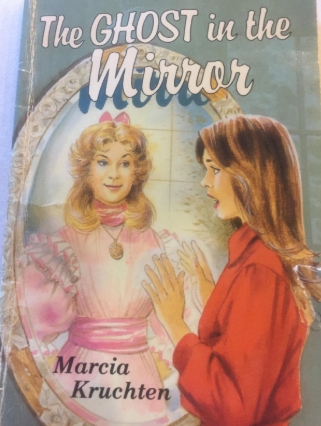Beston felt that “the world today is sick to its thin blood for lack of elemental things.” This statement, penned almost one-hundred years ago, I believe, holds true today. This classic of American nature writing highlights our need for nature, in its most wild and pure.
Read MoreI love Victorian ghost stories because they embody one of my favorite storytelling elements–the past haunting the present. In addition, the function of most Victorian ghost stories was to produce the pleasurable shudder, another of my favorite things.
Read More"Halfway down a bystreet of one of our New England towns stands a rusty wooden house, with seven acutely peaked gables, facing towards various points of the compass, and a huge, clustered chimney in the midst. The street is Pyncheon Street; the house is the old Pyncheon House; and an elm tree, of wide circumference, rooted before the door, is familiar to every town-born child by the title of the Pyncheon Elm." Nathaniel Hawthorne’s Gothic classic, The House of The Seven Gables, combines my favorite storytelling elements and reads like a Dickens or Hardy novel. And it warns: Beware of the Sins of Your Forefathers
Read MoreMany people are interested in mythology, yet often they consider these stories as nothing more than entertaining tales from a bygone era. If one really wants to understand the importance of myth, in a modern context, just watch a movie, look at your calendar, fall in love, or ponder the mysteries of life and death. Myths permeate our language, our ethics, and our ideas about human connections; they are constantly recycled in the books we read and the films we watch.
Read MoreThis is a fantastic read to curl up with beside a warm fire on these dark winter nights. It’s a good, slow read, one you’ll really want to wallow in. And if you’re anything like me, and you love the work of the Bronte sisters, as well as a dark and gothic tale, you’ll enjoy The Distant Hours by Kate Morton.
Read MoreIt’s highly unlikely a person will make it through life with their heart in one piece. Heartbreak is inevitable. Indeed, literature is replete with heartbreak, all due to failed romance, death, or betrayal. But at the same time it reminds us that broken hearts can mend. Charlotte Brontë’s Jane Eyre depicts lost yet redeemable love, which refuses to give up.
Read MoreMany claim Charles Dickens invented Christmas. And there’s a reason why. Click on the link for my full review.
Read MoreThis collection of tales transports the reader to a time when staircases creaked in old manor houses, and a candle could be blown out by a gust of wind, or by a passing ghost.
Read More“We have an oath.” She pulls me into a tight hug and for the first time in hours, I feel like I’m going to be okay.”
“Bigfoot Hunters forever,” I say the same time she does.
Read MoreSimilar to Celtic mythology, Native American myths are well-stocked with enduring beliefs and traditions.
Read MoreThis book offers an imaginative visual reconstruction to the houses that played critical roles in beloved children’s classics, such as The Secret Garden by Frances Hodgson Burnett, Charlotte’s Web by E.B. White, and Lewis Carroll’s Alice in Wonderland.
Read MoreWide Sargasso Sea tells the story of Mr. Rochester’s first wife, Antoinette Cosway Mason
Read MoreA review on the back of the book reads: “If you’ve ever wondered about the backstory of the man who Jane eventually teaches to love again, Mr. Rochester is officially wish fulfillment.” This is Edward Fairfax Rochester’s story, as told from his point of view.
Read MoreMr. Emerson’s Wife is a creative examination of the “rumored” relationship between Thoreau and Ralph Waldo Emerson’s wife, Lidian.
Read MoreHenry David Thoreau is the giant of American nature writing, known for his masterpiece, Walden. But he wrote so much more. And this book includes all his significant works.
Read MoreThings do not go as planned for the novel’s protagonist, Pip, in his quest to rise socially. And since this is a Dickens novel, rest assured, there are lessons to be learned.
Read MoreRomance, passion, vengeance. Wuthering Heights has it all. And there’s a reason it has not been out of print in over one-hundred and seventy years.
Read MoreReading this book is like having your own personal tour of ten famous houses in literature, such as: Rebecca’s Manderley, Great Expectations’s Satis House and Jane Eyre’s Thornfield Hall.
Read MoreThis book contains three of my favorite storytelling elements: Settings with Atmosphere, Houses as Characters, The Past Haunting the Present
Read MoreThis book contains over 135 classic poems and stories.
Read More


















